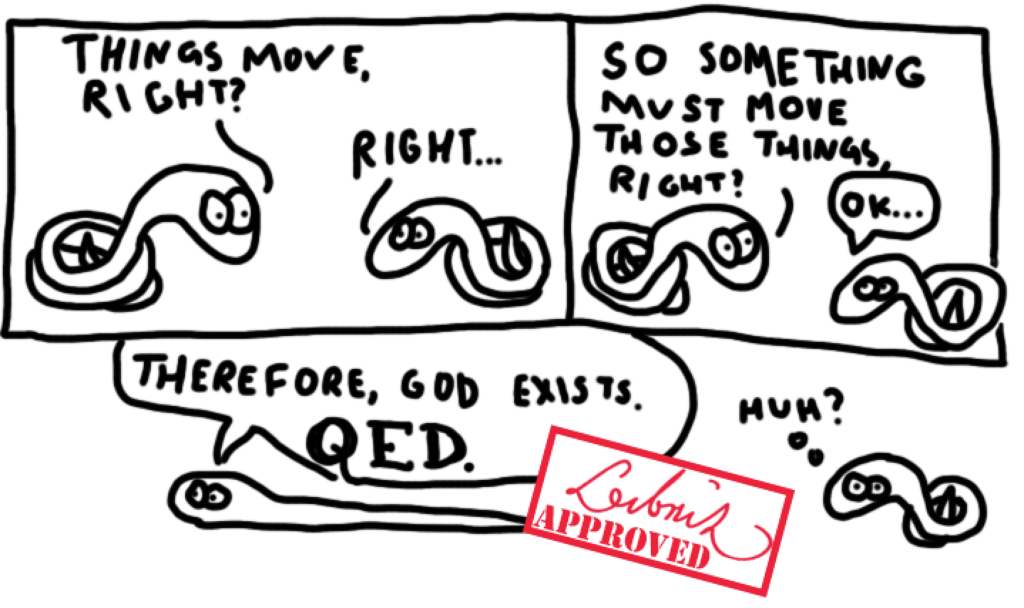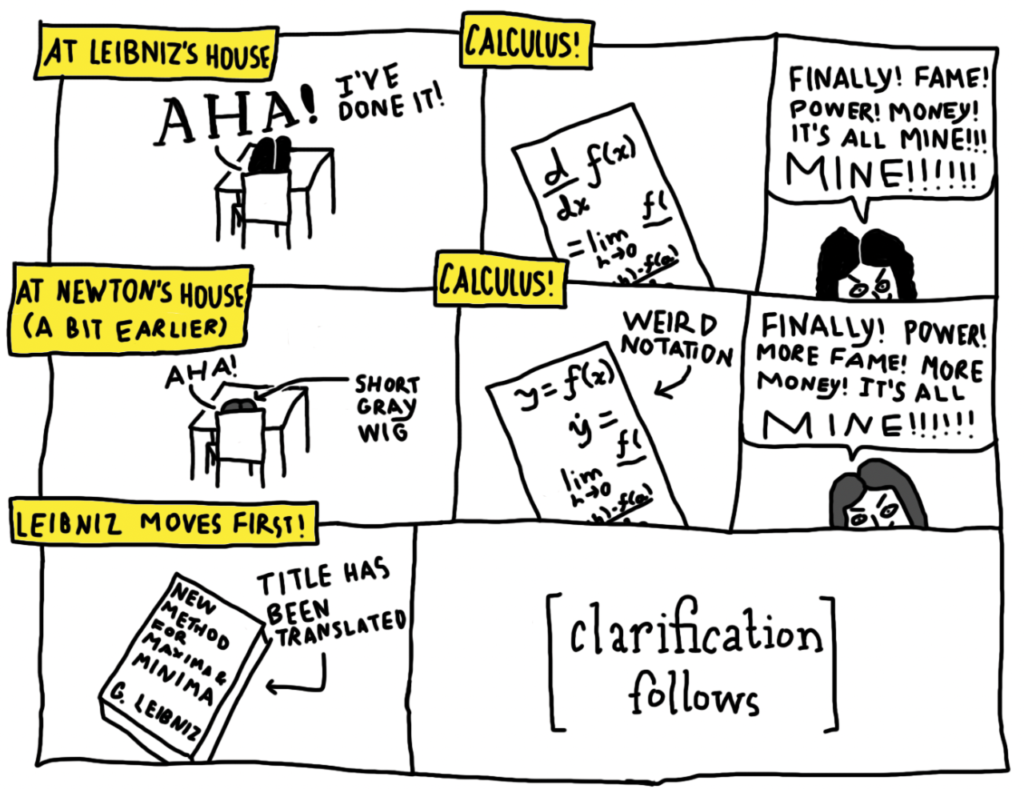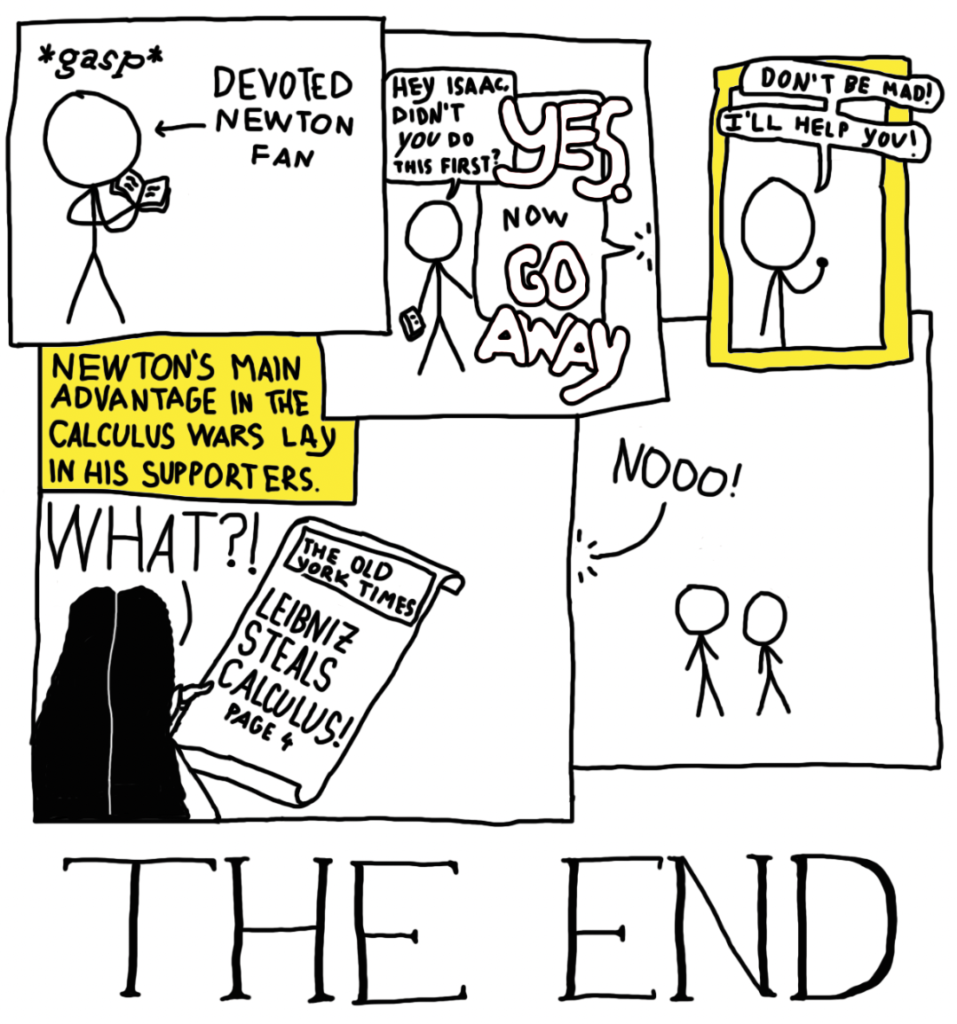The field of mathematics is a wonderful and diverse place. If you have explored it, you will probably have noticed that people who practice mathematics are known as “mathematicians” or “math people”. Now, it may help if I clarify that there are two types of mathematicians.
There are the first type, mathematicians who work in a specific field. These include such people as Cantor (set theory), Euclid (geometry), and Gödel (logic). You could arguably include Escher for art too, but let’s avoid that and move on to the second type.
The second type don’t specialize. They are the people who do everything. (Math polymaths, if you will.) They work in every field: geometry, calculus, algebra, sometimes even science and law. These are the Newtons, the Riemanns, the Eulers, and the Leibnizes.
If you were to compile a list of the greatest mathematicians of all time, you’d be remiss to miss Gottfried the thought-freed. Just look at the size of that wig!

He did a whole lot of things: inventing calculus (this is controversial — we’ll get back to it later), coming up with a method for calculating 𝜋, getting an asteroid and a cookie brand named after him, inventing a calculator (it even sort of worked), and a lot more. So: let’s dive in.
Gottfried Wilhelm Leibniz was born on June 21, 1646. That’s July 1 in the Gregorian calendar; when he was born, people still used the old Julian calendar. Roughly six years after he was born (that is, in ’52), his father, a professor at the University of Leipzig, died, and his mother assumed full parenting duties. Young Gottfried inherited his father’s personal library, and got cracking.
In April 1661, at the age of 14, he entered the college his father used to teach in, the University of Leipzig.
And so, he started studying. In 1666, at age 19, Leibniz wrote his first work, Dissertatio de arte combinatoria (“Dissertation of the combinatorial art” — basically it’s about combinatorics), which to be honest is pretty dry, but it has its moments. I have here paraphrased the proof that God exists that begins the paper:

Also in 1666, Leibniz applied for a Doctorate in Law, and was refused (probably because he was a little young for the title). Then he left Leipzig and applied to the University of Altdorf, which is just outside of Nuremberg, where he wrote a thesis and got his doctorate. All this was still in the same year, but a little later, so he turned 20.
And that’s the first twenty years of the life of Gottfried Leibniz! Moving on.
Leibniz’s first job was at an alchemical society in Nuremberg. He didn’t really know that much about alchemy, but he got his post of secretary by the time-honored method of gathering a list of buzzwords, slapping them on his application, and knowing that the people would say “Oh my god! This person knows everything about alchemy! We must appoint him!”

He soon quit, however, and after some adventures, he landed himself as an assistant to a former Chief Minister of the Elector of Mainz (one Johann Christian von Boyneburg) for a while. Von Boyneburg evidently took a liking to him, because he tried to promote Leibniz’s reputation. Here, he made his calculator, a “stepped reckoner“. Then von Boyneburg died, and Leibniz looked around for a new job, finding one in Duke John Frederick of Brunswick. He then moved to Hanover.
Thus we arrive at Hanover, which was where Leibniz did most of his intellectual work. Here he “invented” calculus and the numerous other things that make him what he is today. You can take a short break.

…
…
…
…

Okay, we’re ready. Are you all done with your breaks?

Alright, moving on to what the High-Haired Hero of Hanover did.
First off, he invented the \frac{d}{dx} notation and the integral sign \displaystyle\int for calculus.
Then he invented the Leibniz formula for pi:
1-\frac{1}{3}+\frac{1}{5}-\frac{1}{7}+\cdots=\frac{\pi}{4}.However, this converges slowly, and when I say slowly, I mean SLOWLY. If you add up 10,000 terms (all the way up to \cdots-\frac{1}{19999}+\frac{1}{20001}), you get a solution accurate to… 3 digits.
Leibniz also did quite a bit in philosophy, but we don’t care about that, because this is a blog about math. Fast-forwarding to calculus.
One of the few things that darkened Leibniz’s career was the dispute over who had invented calculus. Here I shall switch over to my trademarked (not) Math Cartoons™.

Clarification: Newton and Leibniz really did develop their calculi independently of each other. Newton discovered it first, but Leibniz published first. Also, they probably did not dream of achieving world domination through their discoveries.
Continuing:

A brief footnote: The “devoted Newton fan” in the cartoon was Nicolas Fatio de Duillier, who publicly claimed that Leibniz had plagiarized Newton’s unpublished ideas for his book. Eventually people joined him, until in the final years of his life Leibniz languished in obscurity, as everyone was convinced that he had stolen “the calculus” from Newton. Eventually he died. On his grave are written only the words Ossa Leibnitii — “bones of Leibniz”.
However, I believe that he made a larger impact on the world that we know. In his works are found some of the first-ever work on the binary number system:

And there’s also that calculator. In fact, he seemed pretty close to thinking about computation the way we do today. Stephen Wolfram writes, “Had history developed differently, there would probably be a direct line from Leibniz to modern computation”. Could it have? We’ll never know. But perhaps, in some alternate universe, Leibniz won the calculus war. Who knows what would have happened?
A mathematician, like a painter or poet, is a maker of patterns. If his patterns are more permanent than theirs, it is because they are made with ideas.
G. H. Hardy, A Mathematician’s Apology